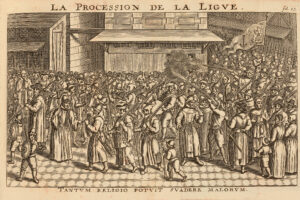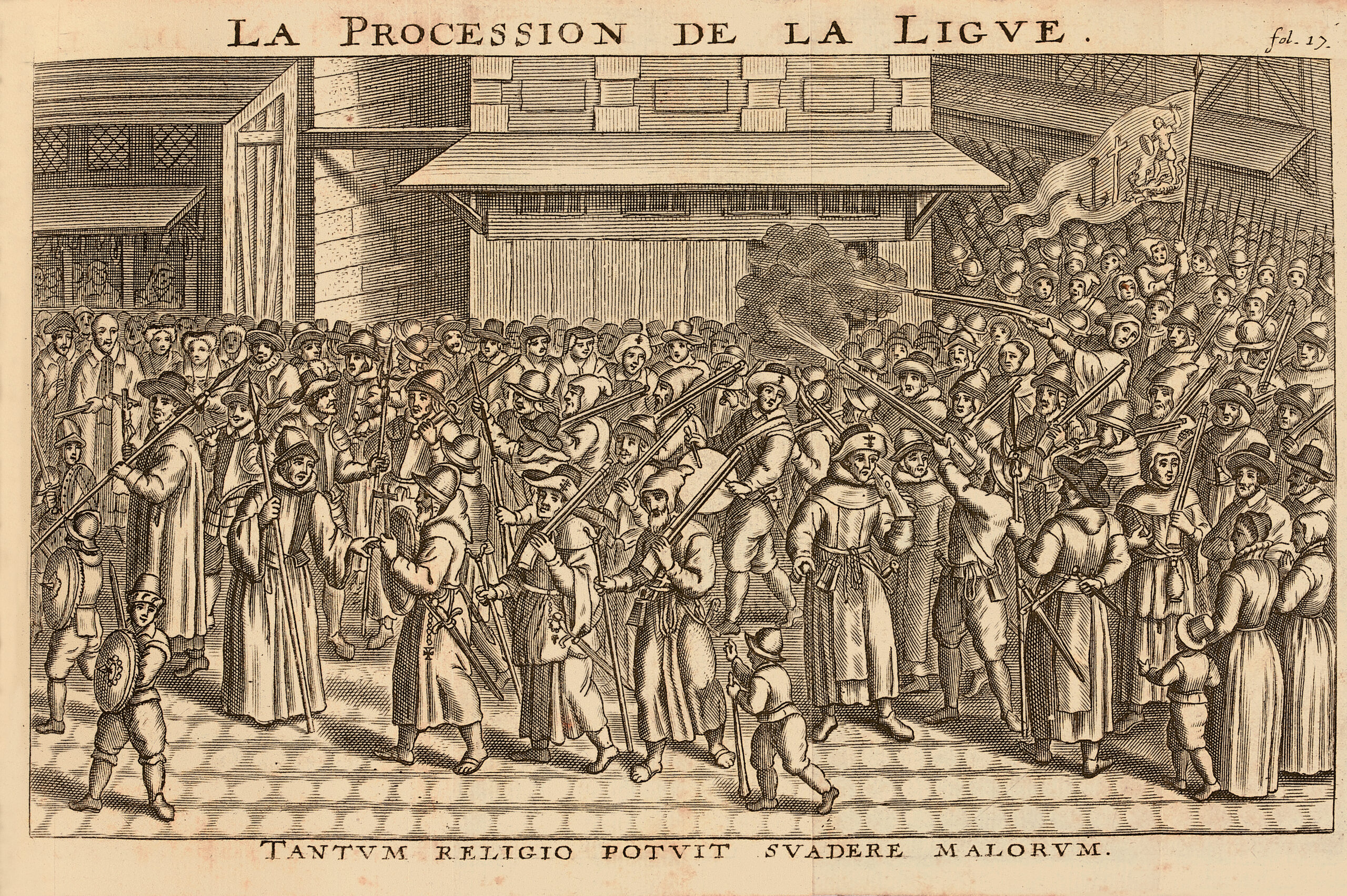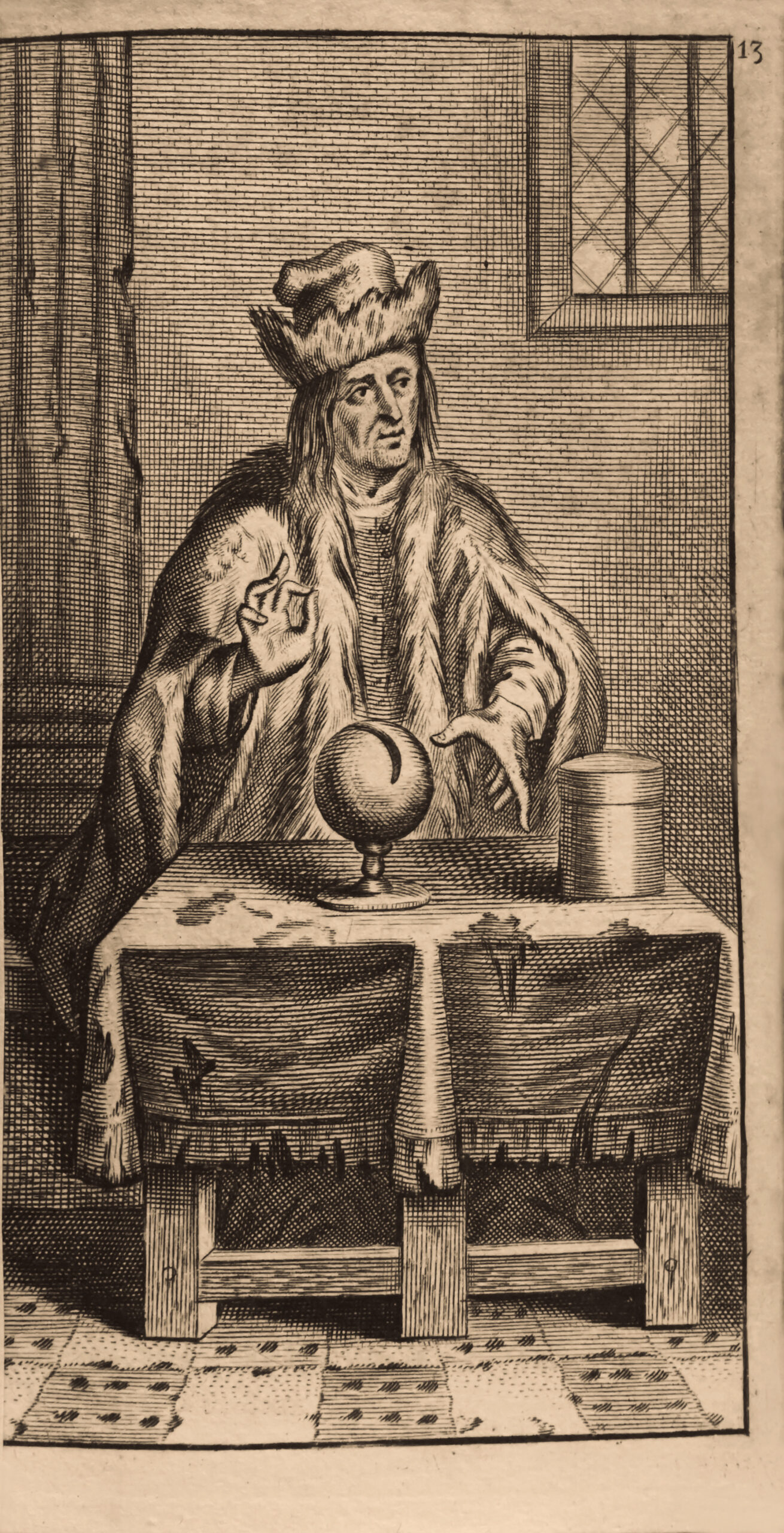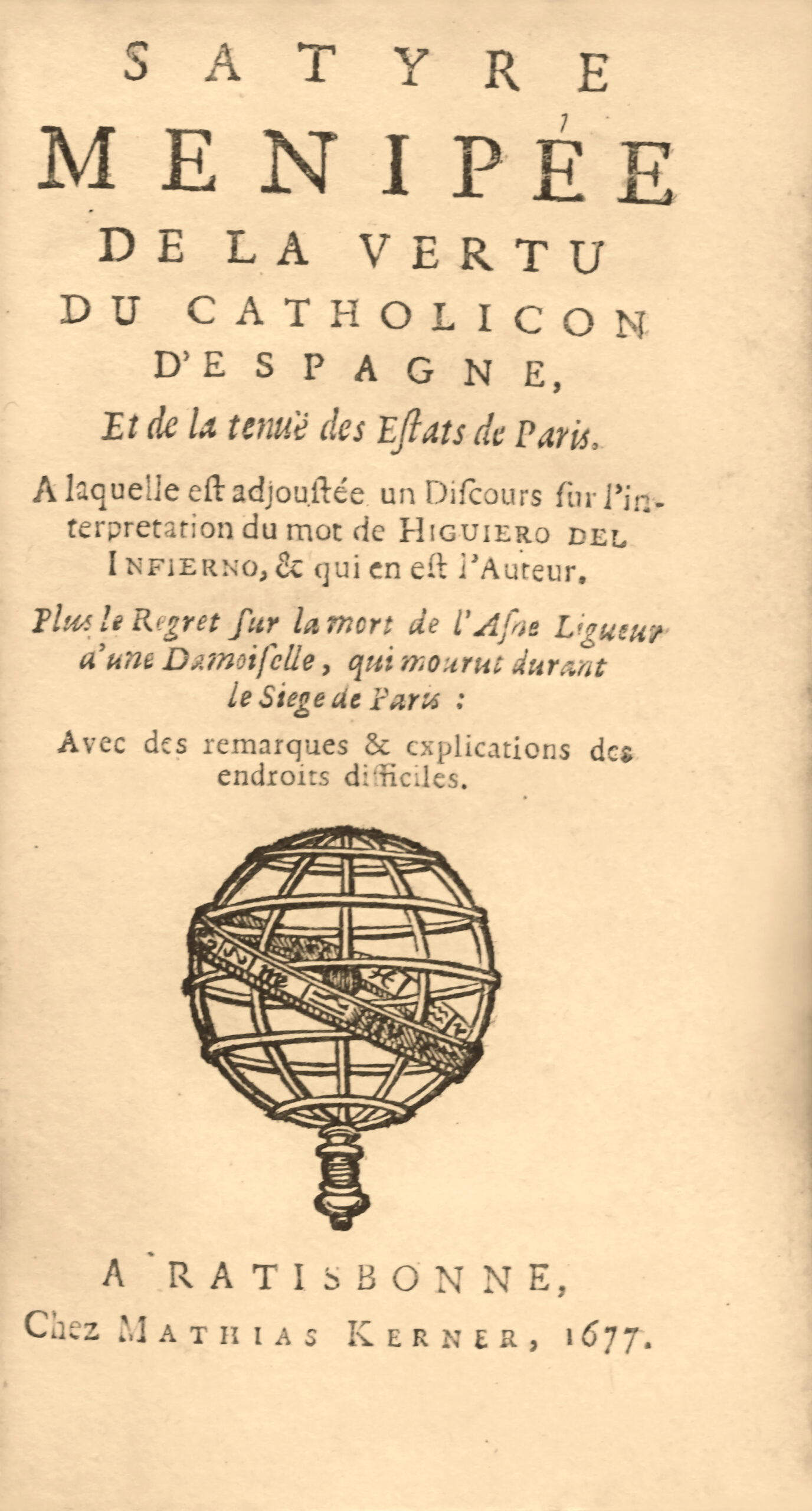Ratisbon, Mathias Kerner, 1677.
Small in-12 of 8, 336 pages and 3 engravings out of text including 2 full-page and one folding, few spots on about ten leaves. Full black morocco, triple gilt fillet framing the boards, richly adorned spine with raised bands, decorated edges, inner roulettes, gilt edges on marbling. Binding of the time.
126 x 70 mm.
First illustrated edition with 3 engravings of the Satyre Menippée. Highly sought after, “it is considered to be more accurate than the 1664 edition and is part of the Elsevier collection”
The folding engraving illustrates “The Procession of the League“.Tchemerzine, II, 397.
According to J.P. Barbier, “the Satyre Ménippée is one of those texts whose literary quality as well as its historical and political content ensured both extraordinary contemporary success and passage to posterity, in the pantheon of literature”.
“Since Rabelais, the Gallic genius had produced nothing more scorching”, writes the latest bibliographer of this book, (Yves Cazaux, French Review of Book History, no. 34, 1982, p. 3).
Charles Nodier, who re-published the Satyre in 1824, noted that “there shone in all its brilliance the spirit and character of France”. Pierre Champion called the work: “A book of great patriotism and sound common sense, summarizing our history, seen from the perspective of the divisions incited by the foreigner with the intention of weakening France”.Taking advantage of the Wars of Religion, the House of Lorraine seeks to seize power under the guise of the Holy League, a general union of Catholics formed in 1576. Henri de Guise raises Paris against Henri III (day of the Barricades, May 1588), but the king has him assassinated and makes an agreement with “the Béarnais”, Henri de Navarre, heir to the crown. The Leaguers are defeated at Senlis in 1589 but Henri III is in turn assassinated by Jacques Clément. Henri IV, a Protestant prince, must go conquer his throne. He is supported by his coreligionists and by the Politiques, a moderate party that above all wants to end the civil war.
Paris is then delivered to the “Sixteen”, representing the sixteen districts of the capital and staunch Leaguers, who reign terror under the protection of a Spanish garrison. The Duke of Mayenne, brother of Henri de Guise, is appointed lieutenant general of the kingdom. However, Henri IV, victorious at Arques and Ivry, comes to besiege Paris. In the capital, discontent is great: moderate Catholics (the Leaguers are “zealous Catholics”), supported by the Parliament, gather around a former provost of merchants, D’Aubray. Mayenne must convene the Estates General (1593). This assembly, tasked with appointing a king, refuses to do so. Soon Henri IV, to complete appeasement, abjures Protestantism, and Paris opens its doors to him.In 1594 appears the Satire Ménippée, a humorous account of these Estates of 1593. It is the collective work of a group of Parisian bourgeois, happy to greet, in the defeat of the League, the victory of reason: the canons Gillot et Pierre Leroy, the humanist poet Passerat, a scholar, Florent Chrestien, finally men of law, Gilles Durant, Rapin et Pierre Pithou. The small verses that embellish the work are from Passerat et Rapin; the Speech of M. D’Aubray, an essential piece, is by Pierre Pithou. The title refers to the cynic philosopher Menippus (3rd century BC) and thus announces a blunt and burlesque forthrightness.
It aims to ridicule the adversary by attributing to him a cynical ou foolish language. Thus, the champions of the League, one after another, make speeches that overwhelm them. This method would be cherished by 18th-century ironists, particularly Voltaire. The enormities thus uttered provoke a vast burst of laughter, as opposed to common sense. But the tone must vary, and the Speech of M. D’Aubray seriously and even eloquently presents all the reasons advocating for Henri IV and peace. The author is well-versed in his rhetoric; he is well-fed on Cicero and skillfully handles the period, the apostrophe, the exclamation, and the rhetorical question. His language is full of sap, it has that direct and vivid vigor so characteristic of the 16th century. The work is appealing due to its clear-sighted patriotism; compelling, despite its length, for its distinctly French qualities: an irony full of good humor, a verve worthy of Rabelais, and an eloquence committed to moderation and reason.
“The Satyre Ménippée is a crucible where many literary forms and traditions merge. It recalls the ancient “satire”, to which it lends, thanks to a false etymology, the freedom of demeanor and speech of the mythological “satyrs”. The term “ménippée” also refers to Antiquity, where this adjective described a work mixed with prose and verse. These abound in the work of Pithou and his friends: quotations from Greek and Latin poets, songs of popular style that mock Mayenne’s corpulence or the flight of Catholic troops at the battle of Ivry. These verses usher in a good-natured “very French” atmosphere into a somewhat dark scene and remind us that Rabelais’s homeland is not inclined to live under the penance hour as desired by Spanish austerity or the spirit of the Council of Trent. Moreover, the references and allusions to Rabelais, which provide the Satyre Ménippée themes and carnivalesque motifs adapted to the circumstance, are countless. Ultimately, what made the success of this work is the perfect adaptation of the literary form to the ideology: victorious Henri IV, it’s the triumph of religious freedom (which the Edict of Nantes will ensure in 1598) and literary freedom”. D.M.Delicious and remarkable copy, with the engravings in excellent preserved print, kept in its very beautiful period morocco.





